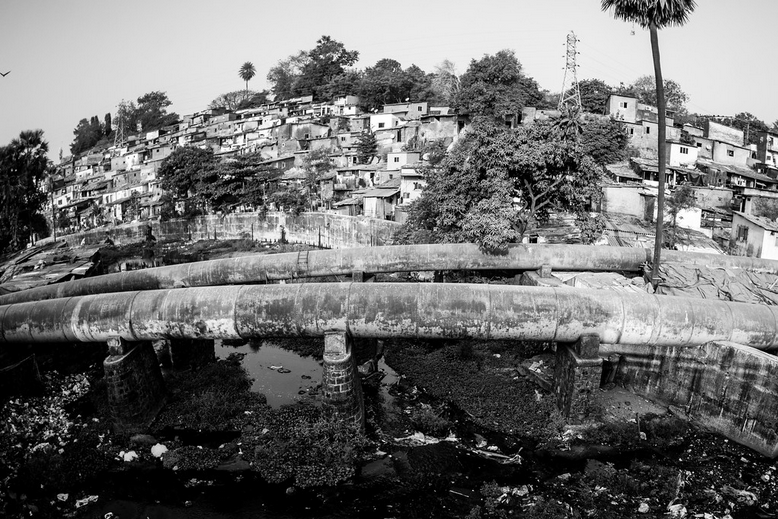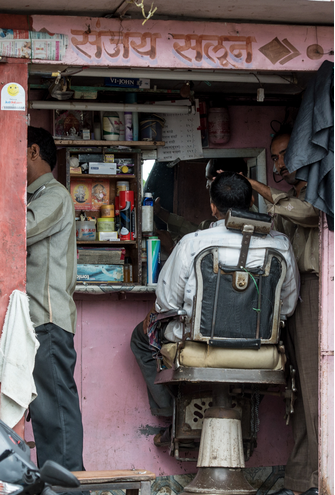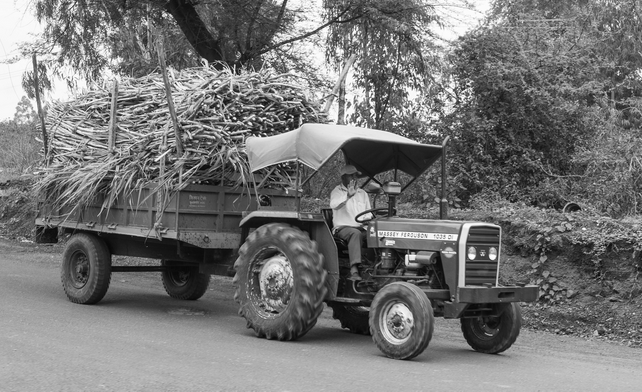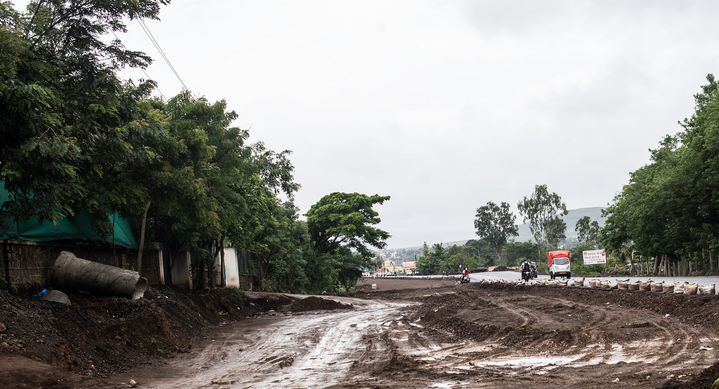Blog – Article and Pictures by John Werner, Head of Innovation and New Ventures, MIT Media Lab, Camera Culture Group. This is John’s 3rd trip to Nashik with the group.
Cities historically were planned alongside waterways – long and winding from mountains into towns. This dates back to the 17th century, when engineers and city planners developed centralized networks to deliver drinking water, food, and energy.

Boston is an example of such a city that was built around its waterways.
When I think of the structure of a modern city today, I think instead today of the potential to link populations not only by waterways and highways but by the massive amounts of data ebbing and flowing through our lives. I also think of the fact that many cities around the world are swelling in population far before the infrastructure is in place to support the population which results in them being crowded and often inefficient. All of this raises a couple of questions to me: What if we were to enable our cities with dynamic, networked, self-regulating systems that could take complex interactions of everyday life into account? What if deployed emerging technologies to create a nervous system for cities that could support wide-ranging needs of the population?
This picture brings back a funny memory during one of my trips to India. Every day we would travel in a fairly ordinary buses but on our last day, we were given a large fancy bus. Quite ironically, this bus was a couple of inches too tall to fit through the tunnel of the aqueduct which forced us to take a long detour and reach our meeting two hours late. Couldn’t this have been avoided with better access to simple information?
To answer questions like these, MIT Media Labs has launched an initiative called Kumbhathon, which is engaging with startups to develop technologies that could emerge with the 30 million people expected to attend the Kumbh Mela at Nashik this year.
We are working towards investigating new models of cities that are connected across disentangled civic systems through the application of customized emerging technologies, thereby pushing forward the development of smart cities. A group of us at the MIT Media Lab (members of the Camera Culture, Changing Places Group, and Fluid Interfaces) and others across the MIT commuity are creating a platform to bring together the government, innovators, entrepreneurs, engineers and corporations to build technologies that understand and respond to human activity, environmental conditions, and market dynamics.
We are interested in finding optimal combinations of automated systems, just-in-time information for personal control, and interfaces to persuade people to adopt sustainable behaviors. We want to leverage the internet and smart-phones and the cloud and the critical role that cities are assuming in innovation. Through this work, we aim to develop better cities which use information technology to solve urban problem and in doing so, impact the lives of millions and potentially billions.
In a couple of weeks, as part of this effort, we will be traveling to Nashik, India. In Nashik, where we are creating a powerful platform for data to solve problems and be innovative. One of our partners is Sunil Khandbahale. To me, he is like Dr. Seuss’ fictional character- The Lorax, who saves trees! Sunil studied in a school where he didn’t speak English and was given a dictionary to translate; he found it to be such a useful tool that he created an SMS- based platform that 150 million people use to communicate today- hence the Lorax, because he saved millions of trees from being cut down to make dictionaries.
Sunil Khandbahale and his family
Nashik is not only filled with successful and aspiring entrepreneurs like Sunil, but it also is a very unique city to consider development problems at scale. Nashik is a satellite city of Mumbai (two and half hours from Mumbai), a ‘Tier 2 city’ with a 2 million population, an emerging city – 16th fastest growing according to the UN and will be a pop-up city in August of 2015 as a result of the Kumbh Mela. Nashik will grow to be the most populous city on earth – numbering 30 million, as people emerge and converge for the epic Kumbh Mela – a Hindu pilgrimage that is the world’s largest religious gathering and is held every third year at one of the four venues — Haridwar, Allahabad (Prayag), Nasik and Ujjain, by rotation. The pilgrimage is guided by a desire to be cleansed of one’s sins in the river. This known ritual is known as taking a holy dip. The location of the holy dip is at Ramkund in Nasik. Despite the tremendous crowds, the young/old/weak visit without any hesitation.
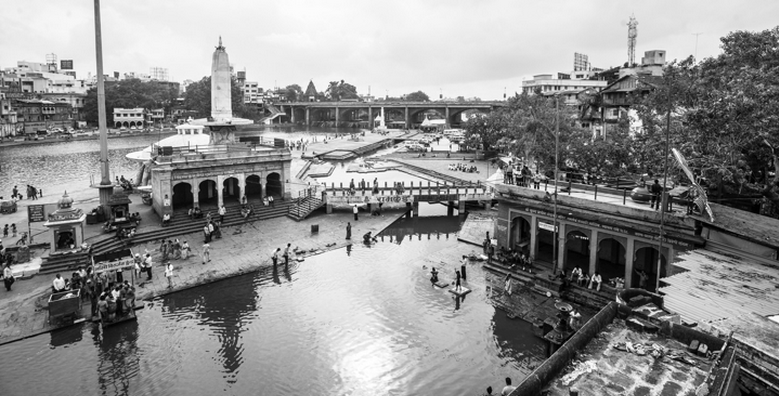
The holy water in Nasik where 30 million people will be taking dips.
At a time when Mr. Narendra Modi, Prime Minister of India and the Indian government have laid out technology-driven plans like ‘Digital India’ and smart city program to the tune of 1.2 billion dollars, many people are greatly excited by our plan to use Nashik as a sandbox for innovating new technology-based solutions. In fact, our experiment at Nashik is the beginning of a new wave of research to evaluate strategies that can progress the creation of smart cities.
Our efforts in Nashik began two years ago through the development of buildathons. During the buildathons, we worked with entrepreneurs in Nashik from all different backgrounds from computer science to biology to business to identify the major problems within the city and then jointly create solutions.
Through a selective and iterative process, we now have 12 promising products in development. At the end of January, we will be working with the projects and product teams to identify the technical, operational and business constraints that prevent them from launching by the Kumbh Mela. Additionally, we will be bringing in partners from multi-national corporations to act as mentors to share their insights around innovating at scale.
Demo Day at MIT schedule on April 16 2015, Bi-Annual Consortium Meeting at MIT Media Lab
In a very competitive world, people have to constantly re-invent themselves. A testament to this is the story of IBM, which started off as a manufacturer of time punch clocks, a very different company from what it is today. Over these past few months, my conversations with leaders of industry giants of the world such as 3D Systems, Clinton Health Access Initiative, Colgate, Godrej, Google, GSMA, GSK, ICICI, INK, Jabil, Jawbone, Khosla Lab, Megapolis India, Microsoft, Quantum, Sapat, TCS, TechMahindra, VSP, Unilever, Welspun, WIPRO, Xerox have sparked many endearing discussions: Unilever, for instance shared how it had executed a successful campaign in the previous Kumbh Mela by stamping Indian bread with hygiene suggestions. GSMA was enthused by the opportunities of the Kumbh Mela and shared an idea about how the 10 million cell towers in the world could potentially be used to charge cell phones via radio waves. Moreover, companies such as XEROX and TCS were so excited that they decided to send their R&D teams to Kumbathon 4.

With 900 million cell phone users in India, the potential for mobile innovation is incredible. For instance, in the near future, couldn’t this man receive health diagnostics of his child at his fingertips?
This has not just fueled my energy and enthusiasm but has also backed my belief that this initiative is a window for the visionaries and titans of the world to together shape the future and think about innovative ways to bring value to the world. In fact, every projects we have shortlisted could represent million to billion dollar opportunities when realized. Who knows, the next Google could even be two people coming out the Kumbathon.
In closing, we are creating a platform that brings together stakeholders, innovators and private corporations to build technologies that understand and respond to human activity and market dynamics. By evaluating the approach and the impact that these technologies have towards building a smart and better functioning city, the lessons will then be applied throughout the US and other rapidly growing cities during a scale up phase of the project.
If you are planning to join us for the Kumbathon 4 in Nasik in January 2015, here are a few places to visit while in Nasik:
Nandur Madhmeshwar- migratory bird sanctuary
Sula Wines – local winery and restaurant
Jawahar- tribal art (warli paintings)
Chandon- Moët Hennessy, champagne factory in Dindori.
Pandav Lene – Buddhist caves in Nashik.
Ajanta/Ellora – world heritage site, Buddhist caves (3 hours drive from Nashik)
Having completed a successful RedX event, we are excited for the Kumbathon 4.
Being an avid photographer, I wanted to share with you some pictures that I clicked during my visits to India that could give you a glimpse into its diverse culture and exciting possibilities and get you excited for the Kumbh.
New Mumbai Airport
Sceneries during journey to Nashik from Mumbai:
Arriving at Nashik.
Mayor Of Nasik
Sunil and Ramesh and I meeting with Government Officials about the Kumbha
One of the ‘Sadhus’ or holy persons who will be coming to the Kumbh Mela in Nashik for a dip.
A window into the daily lives of business owners and workers near the location of the Kumbh Mela in Nasik. How could we use data and technology to benefit them?
The co-existence of trucks, two wheelers, three wheelers and pedestrians in a busy street.
Road Widening
My Snaps during previous Kumbathons:
The festive moods awaiting the Kumbh Mela.

